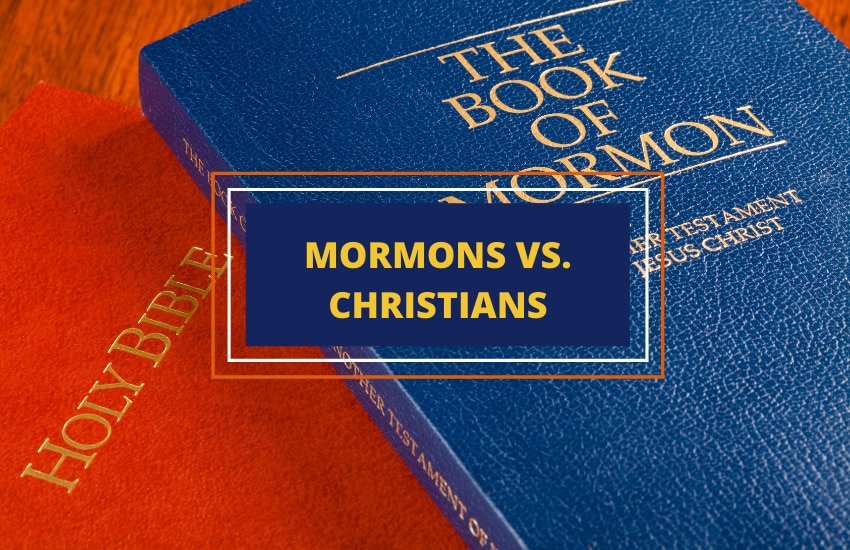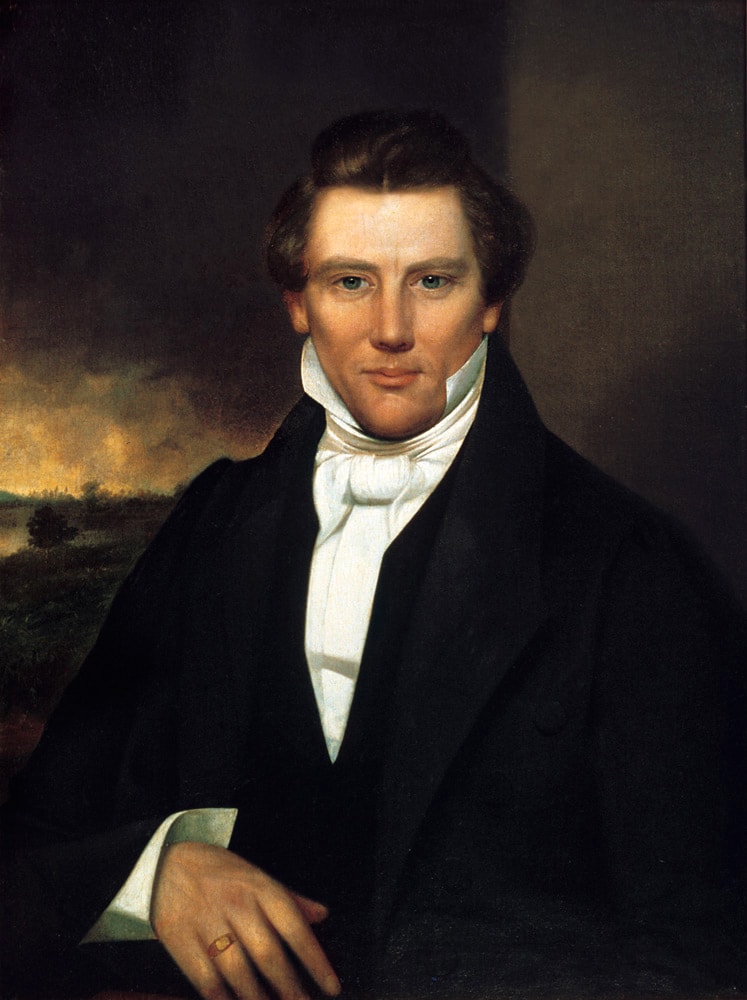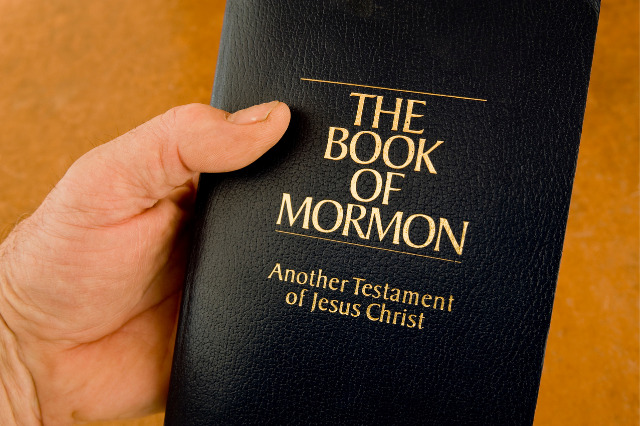
Table of Contents
It was the summer after I graduated from high school. I was eighteen, riding a bus to a place I had never been, filled with other eighteen-year-olds I had never met. We were all incoming freshmen, headed to orientation camp for university.
The game we played on the way was a sort of speed dating meet and greet. Those of us sitting by the windows stayed where we were. Those seated by the aisle rotated to a different seat every few minutes.
I introduced myself to yet another person and shared some personal information. “Are you a Christian?” she asked. “Yes,” I answered, somewhat taken aback by the directness of the question. “Me too,” she replied, “I’m Mormon”. Again, so direct. Before I could ask anything else, the timer went off, and she had to move on.
I was left with questions.
I had known other Mormons, gone to school, played sports, hung out in the neighborhood, but never heard one say they were Christian. Was she right? Are Mormons Christians? Do their beliefs match up? Do we belong to the same faith tradition? Why is their Bible so much bigger? Why don’t they drink soda?
This article looks at the differences between Mormon teaching and Christianity. Of course, Christianity has a wide array of differences between denominations, so the discussion will be pretty general, dealing with broad topics.
Joseph Smith and the Latter-Day Saint Movement

Mormonism began in the 1820s upstate New York, where a man named Joseph Smith claimed to have received a vision from God. With the organization of the Church of Christ (not related to the denomination of the same name today) and the publication of the Book of Mormon in 1830, Joseph Smith founded what today is called the Church of Jesus Christ of Latter-Day Saints (LDS).
This movement was among several restoration movements in North America happening at this time. These movements believed that the Church had been corrupted over the centuries and needed restoring to the original teaching and activity intended by Jesus Christ. The view of corruption and restoration was extreme for Smith and his followers.
What Did the Mormons Believe?
Mormons believe that the early church was corrupted soon after its founding by philosophies from Greece and other regions. Of particular importance for this “Great Apostasy” was the martyrdom of the twelve apostles, which disrupted the authority of the priesthood.
Accordingly, God had restored the early church through Joseph Smith, as evidenced by his revelations, prophecies, and the visitation by numerous angels and biblical figures such as Moses, Elijah, Peter, and Paul.
Mormons believe that the LDS Church is the only true church while other Christian churches may have partial truth in their teaching and participate in good works. The primary difference in this history from Christianity is how LDS severs itself from church history.
According to this restorationist perspective, LDS accepts the Bible, written before the Great Apostasy, but does not connect with any ecumenical councils or ascribe to theological tenets shared by Catholic, Eastern Orthodox, and Protestant Christians. Mormons stand outside of the teaching tradition of nearly 2000 years of the church.
The Book of Mormon

The foundation of the Latter-Day Saints is the Book of Mormon. Joseph Smith claimed an angel had led him to a secret set of golden tablets buried on a hillside in rural New York. These tablets contained the history of a previously unknown ancient civilization in North America chronicled by a prophet named Mormon.
The writing was in a language he called “reformed Egyptian,” and the same angel, Moroni, led him to translate the tablets. Though these tablets were never recovered, and the historicity of the events recorded do not match anthropologic evidence, most Mormons consider the text to be historically accurate.
The basis of the text is a chronology of people in North America who descended from the so-called “Lost Tribes of Israel”. These ten lost tribes, which made up the northern Kingdom of Israel conquered by the Assyrians, were of major interest during the religious fervor of nineteenth-century America and England.
The Book of Mormon details the travel of one family from pre-Babylonian Jerusalem to America, “the promised land”. It also tells of descendants in North America from the Tower of Babel. Though many of the events take place before the birth of Christ, he appears regularly in visions and prophecies.
According to the title page of the Book of Mormon, its purpose is “the convincing of the Jew and Gentile that Jesus is the Christ, the Eternal God, manifesting himself unto all nations”. It is, therefore, no surprise that Jesus figures prominently.
Along with the Book of Mormon, the LDS church has canonized The Pearl of Great Price and Doctrine and Covenants, also written by Joseph Smith. In general, Mormons have an open view of scripture, i.e., it can be added to by new revelations. On the other hand, Christianity holds a closed view of scripture, having canonized the books of the Bible by the 5th century CE.
Who is Jesus According to Christians and Mormons?
While Mormons and Christians share a great deal of terminology about who Jesus is and what he did, there are significant differences. Both groups recognize Jesus as the Son of God who came to earth to offer salvation to those who repent and believe in him for the atonement of their sins. The Book of Mormon also states that Jesus and God have a “divine unity”.
However, the LDS teaching about Jesus is decidedly nontrinitarian, putting it at odds with Christian tradition. In this view, Jesus had a “spiritual” body beforehand that somewhat resembled his physical body on earth. Mormons also believe that Jesus is the eldest of God’s children, not his only “begotten” Son. All people share this pre-existence state before starting their lives here on earth.
The idea of humans existing eternally as children of God factors prominently into the Mormon view of the cosmos, heaven, and salvation. These beliefs about the person of Jesus Christ stand in stark contrast to the Christology taught by the early church councils.
The creeds of Nicaea and Chalcedon state that Jesus the Son is one with the Father, unique in his eternal existence, conceived of the Holy Spirit, and since that time has been both fully God and fully human.
Mormon Understanding of Eternal Destiny
The Mormon understanding of the cosmos, heaven, and humanity is also different from traditional, orthodox Christian teaching. Again, the terminology is the same. Both have a plan of salvation or redemption, but the steps of the method are quite different.
Within Christianity, the plan of salvation is quite common among Protestant Evangelicals. It is a tool used to help explain Christian salvation to others. This plan of salvation typically includes the following:
- Creation – God made everything perfect, including humans.
- Fall – humans rebelled against God.
- Sin – every human has done wrong, and this sin separates us from God.
- Redemption – God made a way for humans to be forgiven through Jesus’ sacrifice for our sins.
- Glory – through faith in Jesus, a person can once again spend eternity with God.
Alternatively, the plan of salvation for Mormons begins with the idea of a pre-mortal existence. Every person existed before earth as a spiritual child of God. God then presented the following plan to his children:
- Birth – every person would be born in a physical body on earth.
- Testing – this physical life is a period of trial and testing of one’s faith.
There is a “veil of forgetfulness” which obscures our memories of pre-mortal existence, enabling humans to “walk by faith”. Humans also have the freedom to do either good or bad and are judged based on their choices. Through trial and testing in life, God’s children receive “exaltation,” the highest level of salvation where they can have fullness of joy, live in God’s presence, maintain their family eternally, and become gods who rule their own planet and have their own spirit children.
The one problem?
Due to this freedom of will, a savior was needed to offer repentance for sins. The pre-mortal Jesus volunteered to be this savior and take upon himself all the suffering of sin so that he and those who follow him can be resurrected. After the resurrection, people will face a final judgment where they will be assigned one of three places based on how they lived.
The Celestial Kingdom is the highest, followed by the Terrestrial Kingdom and then the Telestial Kingdom. Few, if any, are cast into outer darkness.
In Brief
While most Mormons identify themselves as Christians, significant differences set the LDS church apart from the larger Christian tradition. These are mainly due to its restorationist foundation and the space this separation afforded for new theological teaching.








